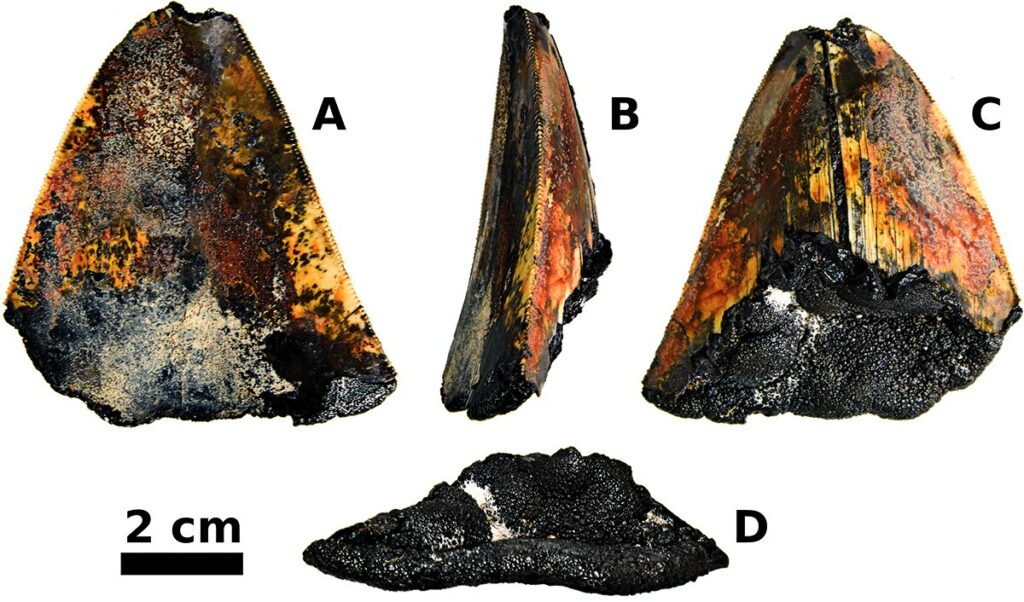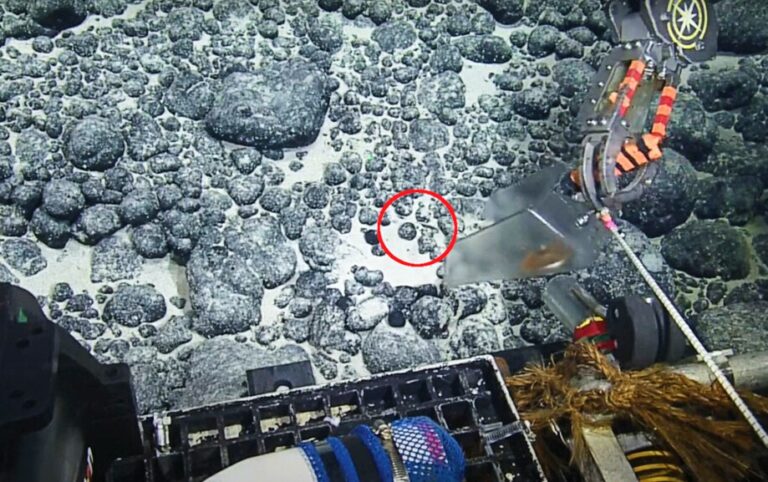Giant teeth from prehistoric megalodon sharks are commonly found by scuba divers or washed up on beaches in certain parts of the world, and a specialist market has developed around buying and selling them.
One meg tooth that was shed at least 3.5 million years ago has just been found in the deep ocean – which would be unremarkable except that it is the first documented example of such a tooth being spotted in situ where it fell, rather than in dredged-up material.
Some deep areas of seabed far from continents can experience minimal deposition of sediment for aeons, usually because they are constantly swept by strong currents.
This must have been the case on the 3.1km-deep ridge crest of an isolated seamount on which US and German researchers on the exploration vessel Nautilus were carrying out a geological and biological survey. The location lay in the vicinity of Johnston Atoll, south-west of Hawaii.

The scientists were scrutinising ROV camera footage when they spotted the fossilised tooth standing upright among small rocks, only partially embedded in sand. Having captured video of it in situ, they brought it to the surface.
The tooth was less than 7cm long and had a broken tip but its serrated edges remained sharp and unusually well-preserved, indicating that it was unlikely to have been carried on ocean currents and subjected to the battering that would entail. A ferro-manganese crust had accumulated over it.

Megalodons (Otodus megalodon) lived between 3.5 and 20 million years ago, and were among the largest known marine predators, reaching an estimated 20m in length. It is not known for sure why they became extinct, although oceanographic changes and competition for food from great white sharks could well have been factors.
“The first in situ documentation of a megatooth shark fossil from the deep sea highlights the importance of using advanced deep-diving technologies to survey the largest and least explored parts of our ocean,” said the team in the study now published in Historical Biology: An International Journal of Paleobiology.
Also on Divernet: Meg 2: The truth about the extinct mega shark, Meg Diver: Bill's Big Tooth adventures, The real Meg – 16m of power, Strange shark & an epoch-spanning graveyard

